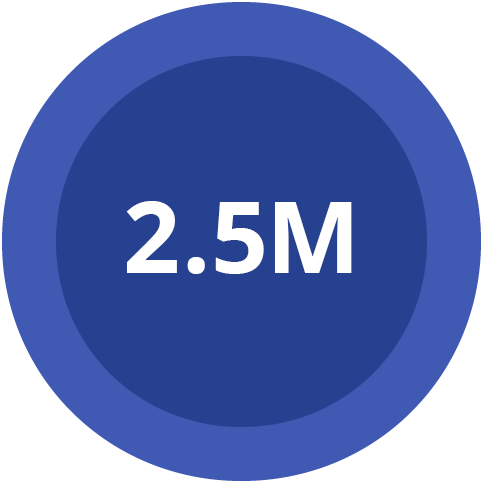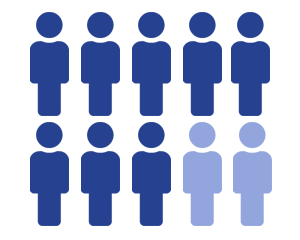Preventing E-Cigarette and Emerging Tobacco Product Use Among Young People
Impact From the Field
Any tobacco use among young people is unsafe. Nicotine is addictive and can harm the developing brain. CDC funds 50 states and the District of Columbia to prevent and reduce disease and death from commercial* tobacco use. Recipients focus on evidence-based strategies to:
- Prevent young people from using tobacco products.
- Help people quit using tobacco products.
- Eliminate exposure to secondhand smoke.
- Advance health equity by identifying and eliminating tobacco-related inequities and disparities.

What Works to Prevent Youth Initiation?
- Promote smoke-free/tobacco-free policies in all places.
- Raise the price of tobacco products.
- Prevent youth access to tobacco products through the retail environment—especially flavored tobacco products.
- Curb marketing of tobacco products aimed at youth.

More than 2.5 million
US middle and high school students reported currently using e-cigarettes in 2022.

Over 8 in 10
US middle and high school students using e-cigarettes used flavored products in 2022.
What CDC-Funded States Are Doing

In 2021, the California Tobacco Control Program ran a media campaign on television, radio and streaming audio, digital, social media, and print. The campaign, Tell Your Story, focused on youth and young adults who use e- cigarettes, or vape, and promoted the I Can Quit text message program for vaping cessation. The campaign reached 169 million people and enrolled 678 youth and young adults in I Can Quit.

Since 2021, Connecticut’s statewide smoke free air law was updated to prohibit cigarette smoking and vaping in workplaces of any size, and smoking rooms are not allowed. This will protect Connecticut citizens, including over 700,000 young people, from secondhand smoke and secondhand e-cigarette aerosol and promote tobacco-free norms in communities.

To support students and encourage them to quit using tobacco products, the Florida Tobacco Control Program worked with 42 school districts to implement a course on the dangers of tobacco product use as an alternative to suspension for students who violate the tobacco-free campus policy. Since 2020, 8,172 students were enrolled in the course, and 68% completed it.

To protect the health of young people, over 360 localities, including Chicago, no longer allow retailers to sell flavored liquid vaping products. The new law took effect October 7, 2020.

In Ohio, 52% of K–12 students attend schools with tobacco-free policies. In 2021, 38 school districts implemented tobacco-free policies that protect all students, staff, and visitors from secondhand smoke and secondhand e-cigarette aerosol in all buildings, grounds, and school-sponsored events.
CDC Activities
In addition to monitoring tobacco use among young people, especially through the National Youth Tobacco Survey, CDC helps parents, educators, health care providers, and other youth influencers talk to young people about the dangers of tobacco products. CDC recently:
Launched “Protect Young People from E-cigarettes,” a national communication initiative that educates adult influencers of youth—including teachers, coaches, and school administrators—about the risks of youth e-cigarette use. Digital and social media messages have reached more than 92.4 million people, including 9.3 million video views and more than 411,000 views of CDC’s e-cigarettes web resources.
Partnered with the American Academy of Pediatrics to develop and publish Youth Tobacco Cessation: Considerations for Clinicians, which has been viewed 4,576 times.


